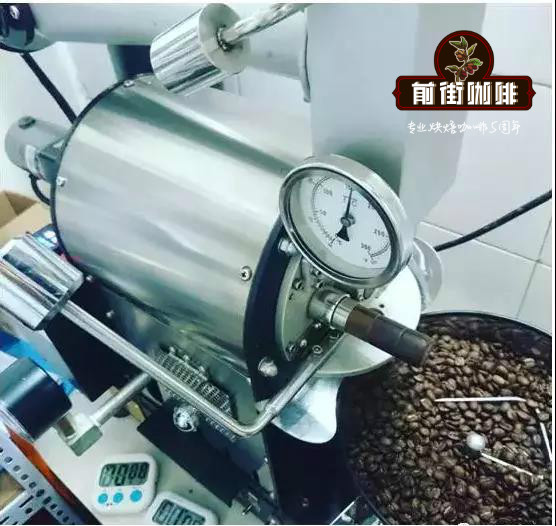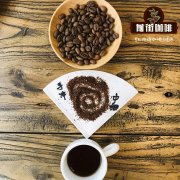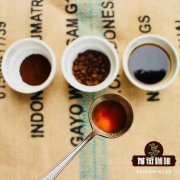What is the fermentation of coffee beans? What is fermentation?

Professional coffee knowledge exchange more coffee bean information please follow the coffee workshop (Wechat official account cafe_style)
What is fermentation?
To put it simply, fermentation is the process by which sugar and starch are decomposed into acid or alcohol. Let's explore more deeply that yeast and bacteria are very important for fermentation.
Yeast fermentation, called Saccharomyces cerevisiae, is a natural wild yeast that is also found in grapes, cocoa beans and other fruits. It is currently used in wine making, cocoa bean processing and coffee processing. "
And the strain is lactic acid bacteria.
Different biological changes take place in the natural fermentation of coffee. Yeast produces enzymes and lactic acid bacteria decompose the sugar in coffee pectin. Lipids, proteins and acids in sugars are degraded and converted into alkyd (alcohol acidic acids). The smell, color and pH of coffee will change, and so will the pectin composition of coffee.
The fresh coffee fruit is wrapped in an exocarp (also known as a pericarp), which turns red or yellow when the fruit is ripe. The mesocarp consists of pulp and mucus, and the endosperm consists of two beans (germs) containing embryos. Each bean is wrapped in a silver coat (seed coat or endosperm) and coated with parchment (endocarp).
The purpose of coffee fermentation is to remove the mucus attached to the parchment after the pulp of the coffee is removed. In the treatment process, the primary microorganisms of coffee are in full contact with the surface of coffee. A variety of microorganisms such as bacteria, molds and yeast interact to break down carbohydrates and polysaccharides into alcohols.
There are two common methods of coffee treatment: dry treatment, usually called sun exposure, and wet treatment, usually called washing.
In the process of coffee fruit to raw coffee bean treatment, there will be more or less "fermentation", whether it is washing treatment, honey treatment, or sun treatment will undergo this chemical change process. Different substances involved in fermentation (coffee peel, coffee pulp, coffee pectin, species of bacteria, distribution of bacteria), different fermentation environment (water and water, oxygen and oxygen, PH environment, etc.), different drying process (container material, natural sun, drying equipment, turning times, etc.), resulting in different post-treatment flavor and taste.
-- END
For more professional coffee exchanges, please scan the code and follow Wechat: qiannjie

Please indicate the source of the reprint.
Important Notice :
前街咖啡 FrontStreet Coffee has moved to new addredd:
FrontStreet Coffee Address: 315,Donghua East Road,GuangZhou
Tel:020 38364473
- Prev

Arabica coffee beans main flavor 100% Arabica coffee is good? what's so special?
Professional coffee knowledge exchange more coffee bean information Please follow the coffee workshop (Wechat official account cafe_style) when we drink coffee, mostly because of the refreshing demand for caffeine, we seldom pay attention to, or do not know the difference between coffee and beans, let alone that there will be a huge difference in flavor and taste. You can only hear it in advertisements.
- Next

Is Harald coffee famous? what's the price of Harald coffee? where can I buy it?
Professional coffee knowledge exchange more coffee bean information please follow the coffee workshop (Wechat official account cafe_style) beans series: Grade 3 treatment method: natural sun method certification: no certification, all coffee is non-toxic organic cultivation * Harald coffee without water washing beans coffee is almost all treated by the natural sun, in Taiwan, Harald producing area is the most
Related
- Beginners will see the "Coffee pull flower" guide!
- What is the difference between ice blog purified milk and ordinary milk coffee?
- Why is the Philippines the largest producer of crops in Liberia?
- For coffee extraction, should the fine powder be retained?
- How does extracted espresso fill pressed powder? How much strength does it take to press the powder?
- How to make jasmine cold extract coffee? Is the jasmine + latte good?
- Will this little toy really make the coffee taste better? How does Lily Drip affect coffee extraction?
- Will the action of slapping the filter cup also affect coffee extraction?
- What's the difference between powder-to-water ratio and powder-to-liquid ratio?
- What is the Ethiopian local species? What does it have to do with Heirloom native species?

